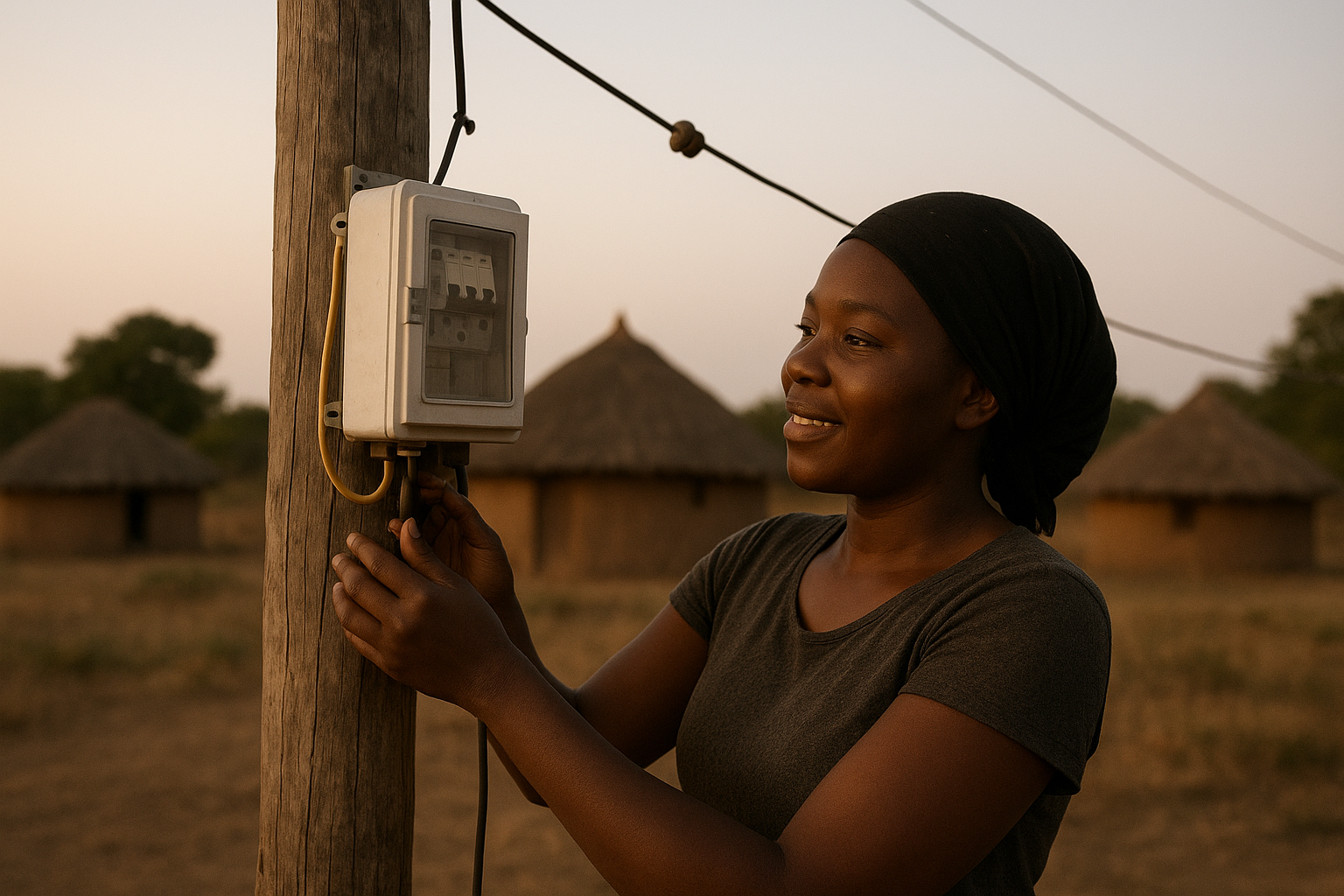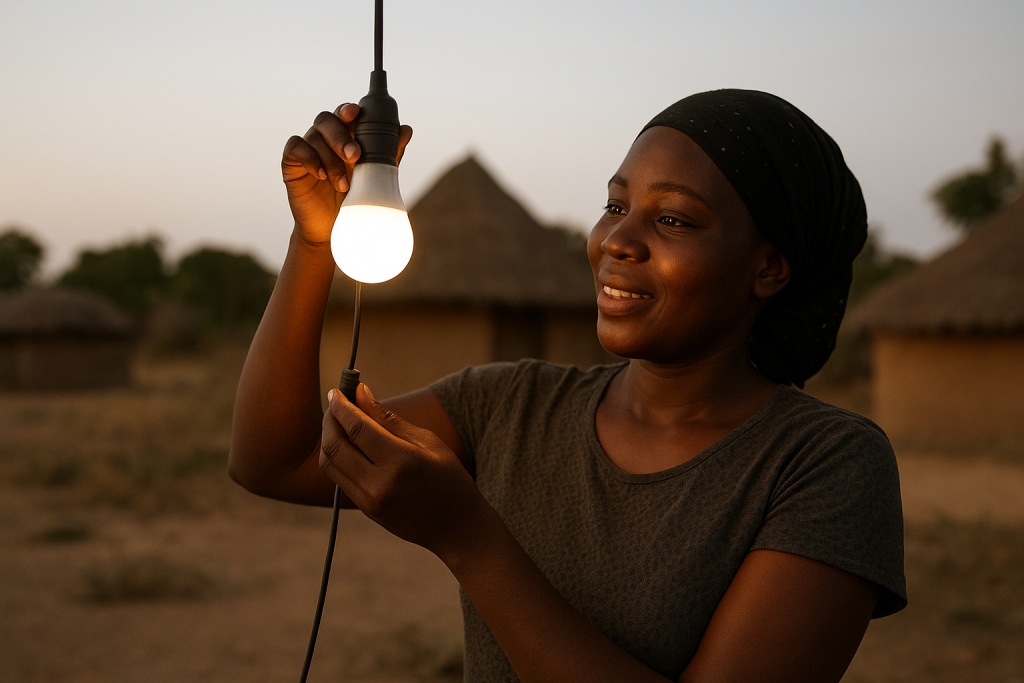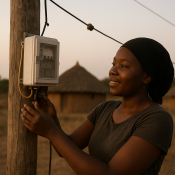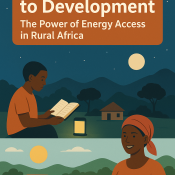
Challenges and Success Stories in Rural Electrification Projects.
Access to reliable electricity is one of the most powerful tools for economic growth and human development. Yet for millions living in rural communities around the world — particularly in Africa, Asia, and parts of Latin America — electricity remains a luxury rather than a basic right.
While governments, NGOs, and private developers continue to invest in electrification programs, the road to achieving universal access is far from simple. The story of rural electrification is a mix of daunting challenges and inspiring triumphs — a journey of innovation, resilience, and transformation.
The Persistent Challenges of Rural Electrification
1. High Infrastructure Costs
Extending traditional electricity grids into remote areas can be prohibitively expensive. The cost of poles, wires, and transformers across long distances often outweighs the revenue that can be collected from sparsely populated communities. In many regions, this makes conventional grid expansion financially unsustainable.
2. Geographic and Logistical Barriers
Rural villages are often located in difficult terrains — from mountain valleys to deep forest regions — making transport of equipment and installation extremely challenging. Seasonal floods, poor road networks, and harsh weather can further delay or damage ongoing electrification projects.
3. Limited Financing and Investment
Although renewable energy technologies have become more affordable, many developing countries still face limited access to financing. Rural electrification requires patient capital, long-term planning, and risk tolerance — elements often lacking in traditional investment structures. Local entrepreneurs and cooperatives frequently struggle to secure loans or grants.
4. Technical and Maintenance Issues
Installing infrastructure is only the beginning; maintaining it is the true test. In some cases, equipment breaks down due to poor maintenance, lack of technical expertise, or absence of spare parts. Without training local technicians and ensuring proper follow-up, projects risk early failure.
5. Socioeconomic Barriers
Even when power is available, affordability remains a challenge. Low-income households may be unable to afford connection fees or monthly tariffs. Cultural factors, gender inequalities, and lack of awareness about energy efficiency can also limit adoption.
Stories of Success and Transformation
Despite these challenges, countless success stories across the globe prove that rural electrification is not only possible — it’s transformative. Here are some inspiring examples:
1. Kenya’s Off-Grid Solar Revolution
Kenya has become a model for off-grid innovation in Africa. Through partnerships between government, private companies, and NGOs, millions of rural homes now use Pay-As-You-Go (PAYG) solar systems. These systems allow families to pay for electricity in small increments via mobile money. Beyond lighting homes, they’ve sparked local entrepreneurship — with villagers using solar power to run barbershops, irrigation pumps, and phone-charging stations.
2. India’s Village Mini-Grids
In India, renewable mini-grids have transformed rural livelihoods. Projects like Smart Power India, supported by The Rockefeller Foundation, have powered thousands of small businesses in Uttar Pradesh and Bihar. With steady electricity, women-led enterprises are thriving, schools are operating after dark, and health clinics now offer reliable services.
3. Rwanda’s Clean Energy Leap
Rwanda’s government set a bold target to provide universal energy access by 2024. Through strong policy support and partnerships with solar companies, thousands of households have gained access to clean, affordable energy. The country’s integrated approach — combining on-grid, off-grid, and mini-grid strategies — demonstrates how national leadership can accelerate rural electrification efficiently.
4. Nigeria’s Solar Hybrid Projects
In Nigeria, innovative solar hybrid mini-grids are powering rural markets, schools, and hospitals. Backed by initiatives such as the Rural Electrification Agency (REA), these projects are bridging the energy gap while creating jobs and empowering youth to manage and maintain local systems.
Lessons Learned from the Field

The experiences above reveal key lessons that are shaping the future of electrification:
- Community Involvement is Critical: Projects succeed when local communities are engaged from planning to implementation. Ownership fosters sustainability.
- Decentralized Energy Works: Off-grid and mini-grid systems are often more cost-effective and reliable than grid extensions for remote regions.
- Technology Alone Isn’t Enough: Capacity building, policy support, and financial innovation are equally vital.
- Women and Youth Are Change Agents: Empowering women and training youth as energy entrepreneurs ensures long-term project success.
The Way Forward
The journey toward universal energy access is ongoing — and every success story brings us one step closer to ending energy poverty. With renewable energy technology becoming more affordable and scalable, rural electrification is no longer a dream but a real, achievable goal.
The future lies in collaboration — between governments, private investors, community cooperatives, and international partners. Together, they can create systems that are not only technically sound but socially inclusive and environmentally sustainable.
Conclusion: Lighting the Path Ahead
Rural electrification is more than just installing power lines or solar panels. It’s about empowering people to live, learn, and prosper. Every home that lights up represents a story of hope — a story of how innovation and determination can overcome the toughest barriers.
As more communities move from darkness into light, they also move from survival to development — proving that when people are powered, progress is unstoppable.




